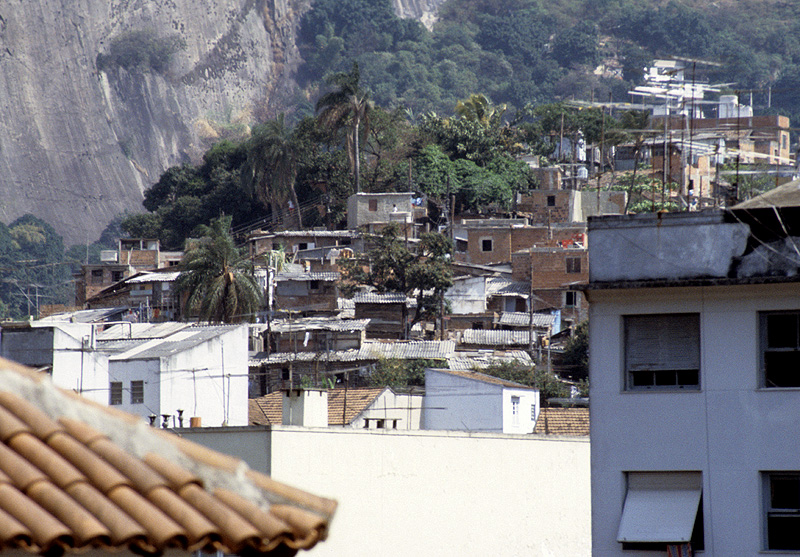
Rio de Janeiro (35) |
 |
|---|
Source: WTL photograph© on site in Rio de Janeiro. "In many ways, the favela is the heartbeat of Brazil's cities, a hotbed of musical talent and home of many of its most creative residents. The cultural input of the favela is rarely acknowledged. In fact, the Carnival would not exist if it were not for these communities. All the main samba schools come from or are named after Rio's favelas. All brazilian cities have favelas, but those in Rio are the most visible. They sprang up as a response to the chaotic expansion of the city. Property prices exploded, making it impossible for a poor family to buy or rent a house downtown. At the same time , it was too expensive for poorly paid workers to take the two or three buses required to travel in from the cheaper suburbs. So, in the early 1900s, families began to build illegally on Rio's steep hillsides. (...) Life expectancy is low--just 48 years,mpared to the national average of 68 years. Illnesses such as bronchitis are common, and although medicial care is available at no cost, essential medicines are not. (In recent years), drug-traffickers, armed with sophisticated, modern weapons, have moved into many favelas, not infrequently resulting in gun battles with police troops, sent in after them. Innocent bystanders, including children, have been killed by stray bullets" (Insight Guides: Brazil, p. 162). |
|---|